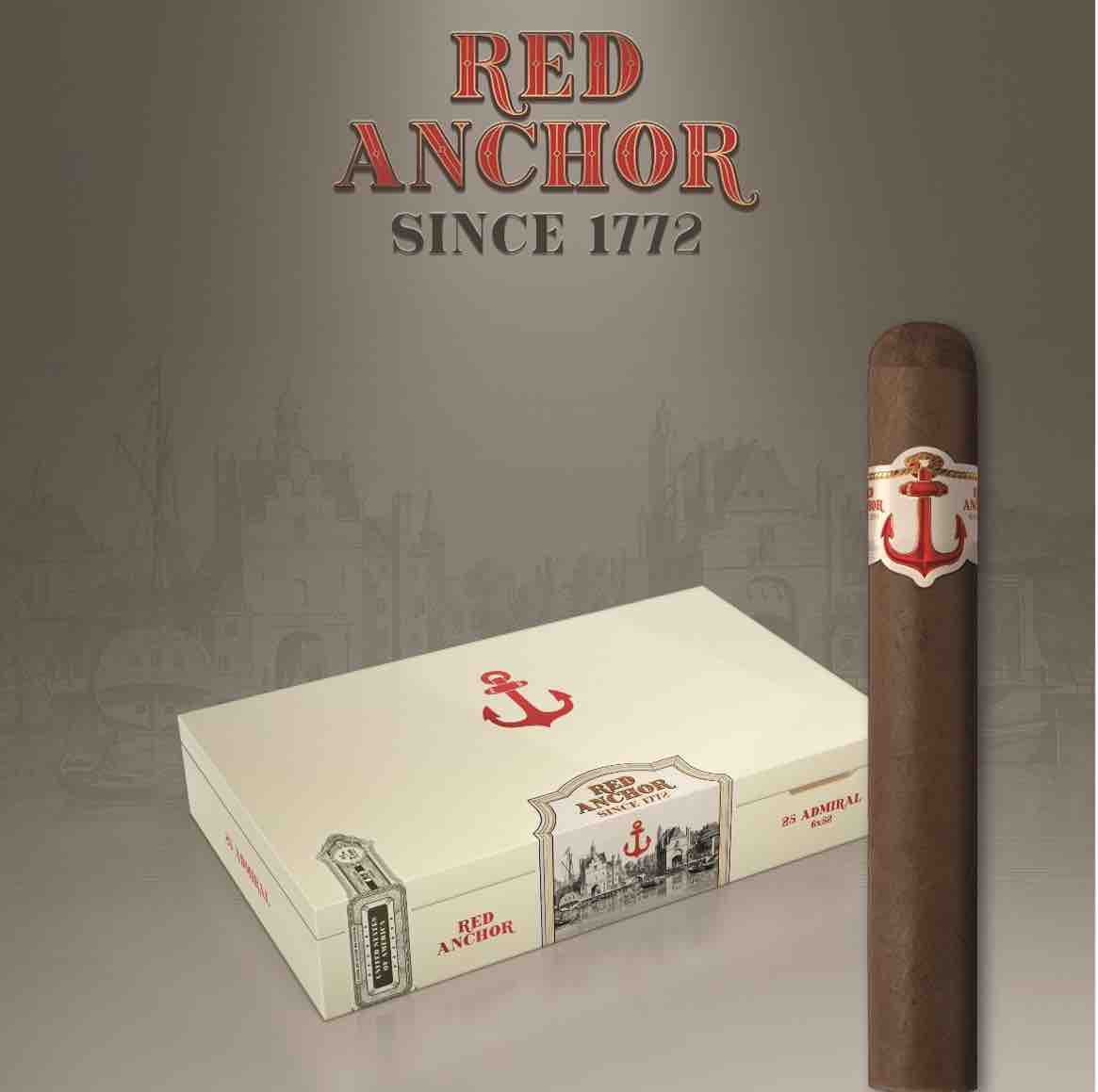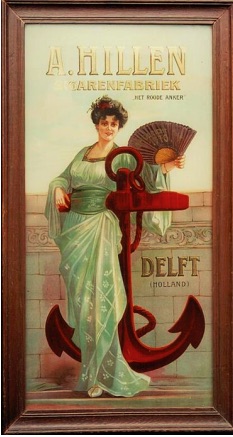
At the 2022 Premium Cigar Association (PCA) Trade Show, United Cigars will bring back a brand known as Red Anchor. The history of the Red Anchor brand can be traced back to 1772, and the relaunch will coincide with the 250th anniversary of the brand.
“Boutique Cigar is a term overused in the cigar industry today, but as you look through history, there is no denying the Red Anchor cigar was the first boutique and cigar brand ever. Today United Cigar is proud to announce Red Anchor’s triumphant return at the Premium Cigar Association Trade Show July 9-12, 2022 in Las Vegas, to celebrate the Red Anchor cigar’s 250th Anniversary,” commented United Cigars in a press release.
In bringing back Red Anchor, United Cigars is partnering with Hendrick Kelner and the KBF (Kelner Boutique Factory) in the Dominican Republic. The partnership is appropriate as the Kelner family has its roots in Holland, and that is the country where the Red Anchor brand commenced.
Red Anchor will see a limited production launch. The first production will be limited to 250 boxes of 25 cigars. Red Anchor is being launched in one size called Admiral which measures 6 x 54. Future vitolas are planned for 2023. Pricing is set at $25.00 or $625.00 per box.
Red Anchor has a very interesting history. United Cigars provided some context behind it:
[themify_box]
History of Red Anchor Cigars (Provided by United Cigars)

Red Anchor was the first registered Trademark for a cigar shop (1770) and later the first cigar brand in history (1772). In 2022 it will be Red Anchor’s 250th Anniversary.
Albertus Hillen Sigarenfabriek established the Red Anchor Factory and Cigar Brand in Delft, Holland. On February 22, 1772, legal permission was granted from the Aldermen of the Municipality of Delft, for Albertus to sell his cigar brand under the Red Anchor name.
After the death of Albertus in 1834, his wife Anna Maria van Spreeuwenburg continued the business for four years until her death in 1838. The brand was then passed on to their daughter, Sara Jacoba Elizabeth and her husband Johannes Petrus de Lange, who acquired the possessions of the Red Anchor factory and Red Anchor cigar brand. Circa 1890’s, upon the sale to Martinus Hioolen, a new strategy was put into place to form a network of stores to sell the brand throughout all major Dutch cities, along with the importing of Cuban cigars for distribution.
In 1909 the latest machines were used to ensure that the process of making cigars could already partly be done mechanically. Hygiene was of paramount importance and special tin packaging allowed cigars to become a widespread export.
Next, more than a hundred branches, spread throughout the Netherlands, began selling Red Anchor cigars making the Netherlands the epicenter of the cigar world.
In 1922 Red Anchor celebrated a milestone; the anniversary celebration “150-Year-Old and New Taste” was introduced, and all tobacco shops were closed for the event on February 22 and 23 . However, when annual reports came out there was less reason to cheer. An overabundance of tobacco manufacturing licenses had been issued creating more competition.
When manufacturing licenses were awarded to home workers, a new law on excise taxes was implemented. The excise taxes were unfair to companies like Red Anchor as home workers were able to circumvent the law. The Minister of Finance acknowledged the fraudulent practices needed necessary changes, but it did little to help Red Anchor.
In 1928 the success of Red Anchor was gradually deteriorating due to burdening costs. To improve the situation, production was increased, resulting in larger stocks of raw materials and finished products. The increased excise taxes caused cashflow shortages. An accounting firm was asked to investigate the possibilities for liquidation or reorganization; creditors were asked to settle for partial payments and a new bond was issued.
In June 1929, meetings were held with shareholders. Headlines in the newspaper read “The End Is Near,” as Red Anchor continued to hold on. In 1935 new machines were bought, new staff recruited, and a small profit was made, yet this could not turn the tide. The new machines did not meet expectations, under delivering on quality of the past and causing draw issues. By March 1937 the business was closed.
In September 1972, the already abandoned building was burnt down in its entirety. The colorful, but smoky history of Red Anchor was literally “up in smoke” until now.[/themify_box]
Photo Credits: United Cigars






